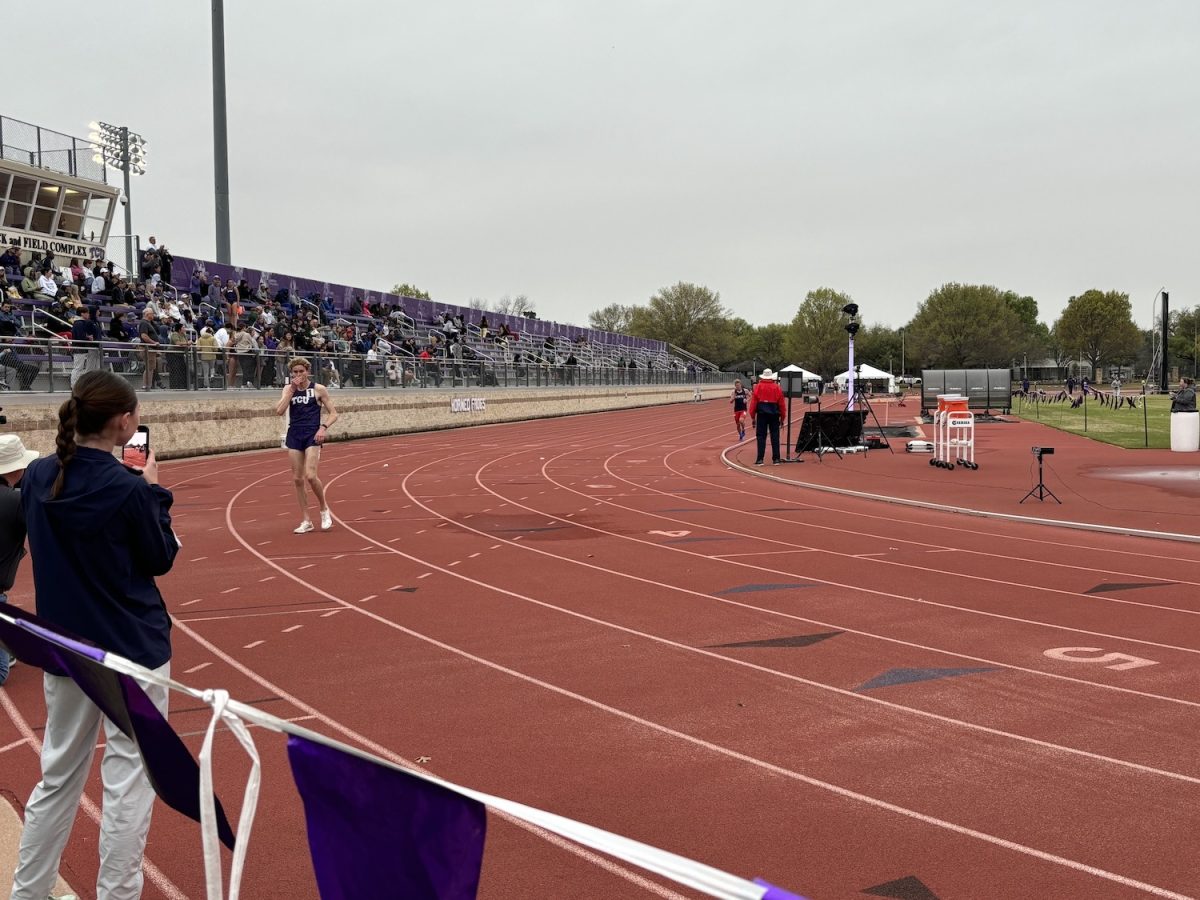Members of the Texas Legislature and Fort Worth Mayor Mike Moncrief said Monday that the Texas Commission on Environmental Quality would increase the number of automated gas chromatograph monitors, which test air quality, operating in the Barnett Shale.
The Barnett Shale is a sedimentary rock formation beneath 20 counties in central North Texas containing natural gas.
According to a press release from the City of Fort Worth, the monitors that TCEQ plans to install would operate 24 hours a day, measuring levels of volatile organic compounds and the data gathered would be used to assess air quality for the region. The monitors’ results are to be posted online.
Andy Saenz, spokesperson for the TCEQ, said three monitors would be added in the next two months, followed quickly by eight more, though no end-date has been set. The location of the monitors will be determined by certain criteria, including the amount of industry and population density in an area.
It is likely, Saenz said, at least one additional monitor could be placed on the outskirts of Fort Worth in an area that was heavily populated with a high concentration of oil and gas drilling facilities.
In October 2008, Chesapeake Energy, the drilling company that has a natural gas exploration lease with the university, withdrew its request for a permit to drill in a campus parking lot north of Amon G. Carter Stadium.
Though other on-campus drill sites were considered, Chesapeake instead devised a development plan in January 2009 to drill at seven off-campus locations to harvest natural gas underneath the university, the Fort Worth Zoo and surrounding areas. Now, according to askchesapeake.com, those sites are either active or on schedule to begin construction this fall.
Jason Lamers, public information officer for the City of Fort Worth, said the mayor and the Fort Worth City Council began efforts several months ago to ask the state for assistance in ensuring healthy air quality in areas affected by natural gas drilling.
The City of Fort Worth will also begin its own independent air quality study at the end of August lasting through the end of September, Lamers said. The study will focus on areas in and immediately surrounding drill sites, rather than on ambient air quality like the automated gas chromatograph monitors installed by TCEQ.
“[The city is] going to monitor point source testing at pad sites,” Lamers said. “There will also be some modeling done to explain the difference between air quality in an urban setting and a rural setting.”
The study, Lamers said, would be paid for entirely by revenue from city-leased mineral properties.
Saenz said drilling companies were supportive of efforts to increase air quality monitoring.
“They’ve told us that the more monitors they have, the more secure their consumers will feel because they will be able to turn on their computer, find the monitor closest to them and check it,” he said.
Alumnus Cooper Raden said the efforts to monitor air quality in Fort Worth increased his confidence in urban gas drilling.
“It shows that the community’s safety is not taken lightly and it makes me feel more comfortable living and working near drill sites,” he said.
Ed Ireland, executive director of the Barnett Shale Energy Education Council, said he did not expect increased monitoring to show raised levels of volatile organic compounds such as benzene, a known carcinogen.
“There are already four monitors in the Barnett Shale,” Ireland said. “One is in Fort Worth at Meacham airport. It’s been operating since 2002 and that monitor has consistently shown that the air in Fort Worth has very low levels of everything.”
Ireland also said that, though there were no drilling sites near a monitor in Dallas, that monitor frequently measured higher levels of volatile organic compounds than the Fort Worth monitor.
In January, the TCEQ released the results of the preliminary survey of an emissions study that found two oil and gas monitoring sites, the Targa North Texas LP Bryan Compressor Station and the nearby Devon Energy natural gas well, had relatively high concentrations of benzene.
“The TCEQ has drawn over 250 samples of air around gas mines and they found only two that were elevated,” Ireland said. “They haven’t found any since.”
Terry Clawson, also a TCEQ spokesperson, said drilling companies were immediately notified of the high levels of benzene detected and that they were corrected “within days.”
Saenz said it was natural to occasionally find higher levels of toxins in the air in areas closest to facilities.
“It will happen at such low levels that we can react quickly,” he said. “We have said from the very beginning that we don’t think we have a widespread health problem in that area. It’s just not happening. The monitors tell us differently.”
Stephanie Sunico, an environmental science lecturer, said, statistically, urban gas drilling poses few health risks, but that it is in a company like Chesapeake’s best interest to drill safely.




